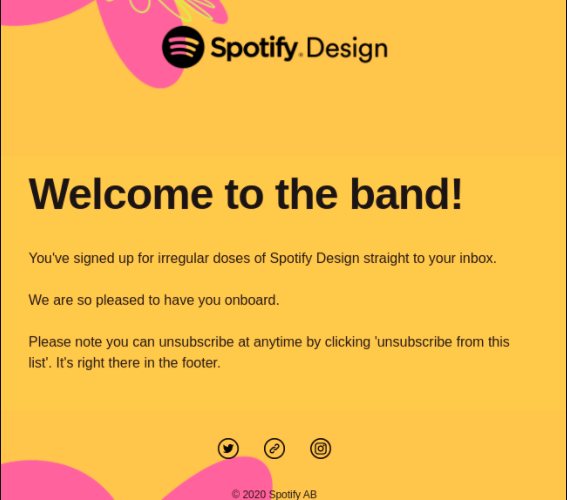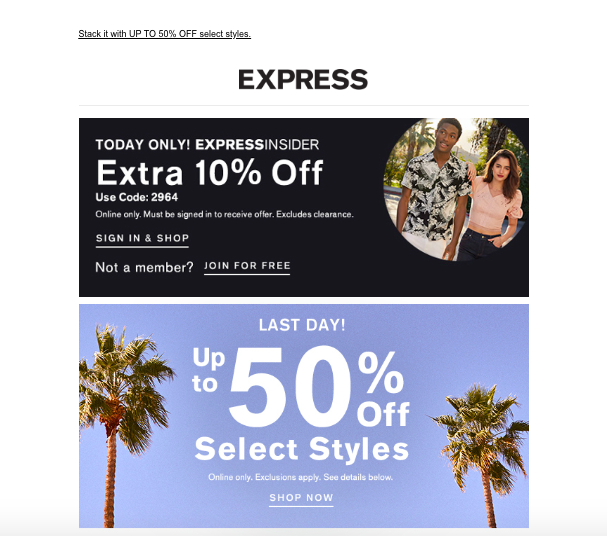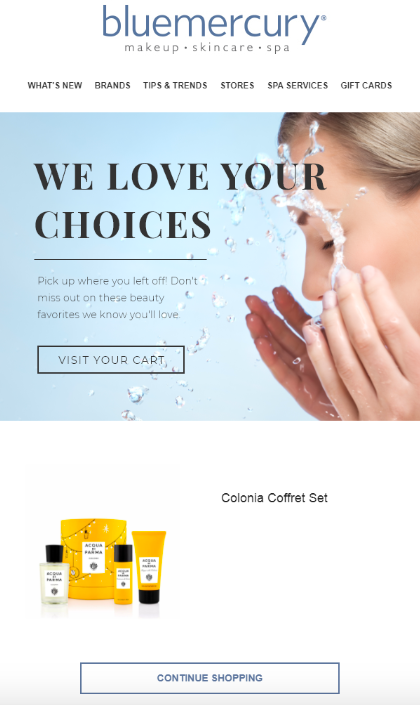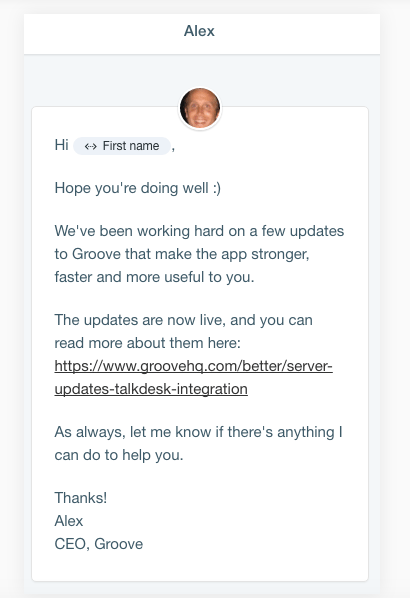From video campaigns to social media posts, there are plenty of ways to connect with consumers these days. There’s one option you definitely shouldn’t overlook, though: email.
Crafting an effective email marketing strategy can be a game-changer. While email marketing may be one of the oldest messaging channels, it still reigns as one of the most effective ways to get in touch with target audiences and potential customers. According to HubSpot, emails produce a 3,600% ROI by generating $36 for every $1 spent, making email marketing the highest ROI channel.
That said, email marketing campaigns — such as email series and newsletters — have endless applications for businesses of all sizes. Let’s dive into how to create an effective email marketing campaign for your company, explore the various types of emails your brand should be sending and understand how using the right email marketing tools can enhance your strategy.
How to Leverage Email Marketing Campaigns
Before we dive into the different types of email marketing campaigns you ought to try this year, we should first define what exactly an email marketing strategy is. Your email marketing strategy should be an organized list of action items that support your brand’s desired marketing goals — such as increasing brand awareness, conversions or consumer touchpoints. A comprehensive email marketing strategy can include everything from lead nurturing emails that foster relationships to promotional campaigns that boost sales and customer loyalty.
Having an email marketing strategy in place is essential for 3 core reasons:
- It aligns email campaigns with overarching business goals.
- It defines email marketing objectives, so you can be sure to provide value every step of the way.
- It enables marketers to evaluate the effectiveness of their emails.
An important part of developing an email marketing strategy includes identifying the goal of each campaign. Every email you deploy should have a target objective in mind, such as:
- Informing: Send updates on new product launches, provide company-related information or supply educational materials that your target audience will find interesting or helpful.
- Engaging or re-engaging: Use email marketing to connect with prospects or re-engage subscribers who may not have interacted with your brand in a while. Sending re-engagement emails can help you reconnect with potential customers and increase engagement.
- Nurturing: Leverage lead nurturing emails to establish consistent touchpoints and turn a new customer into a lifetime supporter of your business, enhancing customer loyalty.
- Converting: Instruct email recipients to perform a specific action, such as visiting your website, completing a contact form or making a purchase with a promo code. Transactional emails can facilitate these conversions by providing essential information at the right time.
Once you have a strategy in place and a goal defined, you can start creating your email marketing campaign. Utilizing automated email systems and effective email marketing tools can streamline this process, ensuring your campaigns reach the right audience at the right time.
9 Email Marketing Campaigns To Try This Year
Before you dive into creating your next big email campaign, brainstorm which types of emails you want to include. Here are 9 of our top picks to consider:
1. The Welcome Series
You’ve locked in a new email subscriber — congrats! Now’s the perfect time to say hello and launch the beginning of a long-term relationship. The welcome email is an opportunity for you to engage new subscribers, encourage them to interact with your brand or convince them to take action, like visiting your website. And when it comes to open rates, Invesp found that welcome emails generate four times more opens and five times more clicks compared to standard marketing emails.
Creating a welcome email series can further nurture your relationship with new subscribers, turning potential customers into loyal advocates. This series can include informational emails about your brand, engagement emails that encourage interaction and nurturing emails that build trust over time.
When drafting your welcome email, there are a few key elements to include:
- A clear, concise and engaging subject line.
- A personalized greeting.
- Steps for the recipient to take action.
- Links to your website, blog or social channels.
Don’t forget: Timing is everything when it comes to welcome emails. Taking too long to contact a new subscriber can cause them to forget about you. Consider utilizing automated emails through email marketing tools so that as soon as someone signs up, they promptly receive a welcome email in their inbox.
Here’s a great example of a Spotify welcome email:

2. Sales and Promotional Emails
The most common emails are sales campaigns. Whether you’re promoting a new product, highlighting a sale or trying to generate a conversion, these emails are important to incorporate into your marketing strategy. However, inboxes can easily become cluttered, so you need a campaign that stands apart from the others. A few ways to ensure that is by:
- Featuring a strong subject line and call to action.
- Keeping your email body short, sweet and straight to the point.
- Providing deadlines to add a sense of urgency.
- Using email technology to personalize the content as much as possible.
Additionally, you can offer a promotional email code specifically for the recipient. Not only can this encourage readers to take action, but you can use the code to track how successful your emails were. Promotional emails are a type of targeted emails that can significantly boost conversions when crafted effectively. They are a cornerstone of any promotional campaign, especially during seasonal email pushes or special events. Utilizing sponsorship emails can also extend your reach by partnering with other brands. Here’s an example of a promotional email with a code sent from the apparel store Express:

3. Seasonal Emails
Changing seasons may call for a wardrobe change, but they can also be the perfect opportunity for sending an email to your subscriber list. Seasonal campaigns coincide with a specific holiday or a new season, such as an apparel store promoting bathing suits at the start of summer. The National Retail Foundation reports that the highest consumer-spending seasonal periods in the U.S. in 2024 centered around Back-to-College, the Winter Holidays, Back-to-School, Mother’s Day and Father’s Day. So whether you’re hosting a spring cleaning event, a new year’s promotion or a summer blowout sale, let the changing seasons be a reason to connect with your customers via email.
Seasonal emails not only boost sales but also enhance customer loyalty by keeping your brand relevant during important times of the year. Incorporating a seasonal promotional campaign into your email marketing strategy can engage customers with timely offers and messages.
4. Post-Purchase Campaigns
Not only is it vital to send emails to encourage a sale, but you also want to touch base with your clientele after they’ve made a purchase. Why? Post-purchase campaigns provide an opportunity to:
- Confirm their order and issue a confirmation or tracking number.
- Thank the customer for their business, encourage future sales and bolster brand loyalty.
- Provide an opportunity for feedback on their experience with your brand.
- Send similar products or promotional offers that can motivate them to do business with you again in the future.
These transactional emails are crucial for maintaining engagement with your customers after a sale. Automated emails ensure that your post-purchase messages are timely and consistent, enhancing the customer experience. Essentially, you should automate triggers to send your post-purchase emails, so you know every customer receives one promptly after making a purchase.
5. Cart Abandonment Emails
Abandoned cart campaigns are exactly like they sound: They engage with customers who recently visited your website and placed items in a cart but never finished the sale. According to research by Moosend, consumers open 40–45% of cart abandonment emails. Of those opened emails, 50% of recipients end up completing the purchase. With those stats in mind, running cart abandonment campaigns is a must for online and e-commerce brands.
Cart abandonment emails, also known as cart emails, are a powerful tool to re-engage potential customers who showed interest but didn’t complete a purchase. These re-engagement emails can remind them of what they left behind and encourage them to finalize the transaction.
So what should your cart abandonment email include? Getting the copy right is critical for success. Incorporate clear messaging that alerts customers that there are still items in their cart and that they need to complete their order ASAP. For extra motivation, you can add an extra prompt — such as free shipping — to ensure the recipient completes the sale.
Here’s an example of a cart abandonment email from Bluemercury:

6. Retargeted Emails
Also known as email remarketing, retargeted emails are sent to people who engaged with your brand — whether through the website, social media or another medium. These people are customers or email subscribers who might need a little nudge to encourage a sale.
Retargeted emails are a form of targeted emails that focus on re-engaging potential customers. By utilizing automated email systems and sophisticated email marketing tools, you can personalize these messages for better results.
For instance, you may be able to track a user who visited a specific page of your website. You can then deploy a retargeted email listing the products they were looking at or highlight similar products that may appeal to their interests. By keeping your brand top-of-mind — as well as at the top of their inbox — you’ll be able to encourage more sales and increase conversions.
7. Trigger Email Campaigns
Triggered emails send automatically. Marketers can select pre-determined qualifiers based on user behaviors. Once a shopper performs these specific functions, the trigger email gets deployed.
Examples of common triggers for these types of email campaigns include:
- Completing an order.
- Subscribing to an email list.
- Milestone emails — such as gaining a certain number of reward points or completing a specific number of purchases.
- Birthdays or customer anniversaries.
Milestone emails can be particularly effective because their personalized nature can increase customer loyalty and engagement, making them an effective tool in your email marketing strategy.
Ultimately, a trigger email may contain similar messaging as a promotional or sales email. However, the key difference is that these emails are automatic and delivered to specific individuals based on specific behaviors. You can deploy promotional emails to large groups of consumers at once and based on the marketer’s decisions, rather than an action.
8. Brand Story Emails
Emails don’t always have to center around transactions. Brand story emails can increase subscriber engagement and bolster your relationship with your subscribers. Use a brand story email to tell the history of your company, highlight your organization’s journey, share future goals or shed a spotlight on the people who work at the business. Whether you’re a startup firm or have been selling goods for over a century, a brand story email can help you convey your unique selling proposition, values and mission to your subscribers, thus building a stronger connection between your brand and its customers.
These informational emails are great for nurturing emails that build trust and engagement over time. By sharing authentic stories, you enhance customer loyalty and encourage subscribers to become advocates for your brand.
9. Update Emails
Whether you’re launching an entirely new product or adding features to your website, share the news with your email list. Update emails spread the word on the latest innovations your brand is implementing as well as solidify your commitment to enhancing the customer experience and making continuous improvements.
Update emails can also include survey emails to gather feedback from your subscribers, further enhancing engagement and tailoring your offerings to meet customer needs. Check out this example of an update email sent from Groove HQ’s CEO about their latest product updates:

Launching a Successful Email Marketing Campaign
While defining a clear goal and picking the right kind of email is essential for a campaign, there are a few other steps you need to take to execute a successful email marketing campaign:
Segment Your List
List segmentation allows you to send emails tailored to a specific group of subscribers. In doing so, customers receive more targeted, personalized messages that speak to their needs or interests. The result? Audiences are more likely to open and engage with the email. According to HubSpot, marketers who utilize segmentation for emails see as much as a 760% increase in revenue. According to MarTech, personalized emails deliver six times higher transaction rates compared to generic, non-personalized ones.
Using an email marketing tool or platform can make list segmentation easier, allowing you to send targeted emails that resonate with each portion of your audience.
Choose Your Deployment Time
When your email is ready to go, it’s time to pick when you send it. Marketing is all about reaching consumers at the right time, and an email campaign is no different.
But how do you choose the most effective time to send a marketing email? It depends on your audience. If you’re sending your email through an ESP like Constant Contact or Mailchimp, the software should be able to provide an ideal email send time for you. If not, HubSpot reports that the best time to send emails is from 9AM to 12PM, followed by 12PM to 3PM.
An effective email marketing company can assist in determining the optimal times for deployment, ensuring your automated emails reach your audience when they are most likely to engage.
Analyze Your Results
Of course, you don’t want to simply send an email and just hope for the best. You can review various metrics and KPIs to determine exactly how effective your email campaigns were and if they’re performing the way you want. Some key results to evaluate include:
- Clickthrough rate: The percentage of recipients who clicked on at least one link in your email.
- Conversion rate: The percentage of users who completed the desired action, like clicking a call to action button in your email.
- Bounce rate: The percentage of emails not successfully delivered to recipients.
- Unsubscribe rate: The number of people who unsubscribed from receiving future emails from your brand.
- Email sharing rate: The percentage of email recipients who posted the email on social media or forwarded it to someone else.
In addition to these metrics, emails are a perfect time for A/B testing. For example, many marketers A/B test email subject lines; they create two or more subject lines and evaluate KPIs to determine which one is most successful. For example, you could create two similar subject lines, one containing an emoji and one without. And you don’t have to stop at subject lines; you can also A/B test your call to action, preheader text, images and more.
Leveraging your email marketing platform’s analytics can provide valuable insights into your campaign’s performance. This data-driven approach is critical for refining your inbound email marketing strategy and achieving better results.
Email Marketing Tools: How To Choose The Right One For You
Email marketing software makes life easier — as long as you have one that can get the job done right. While there are many different tools to choose from, you’ll want to select one that’s easy to use and includes the right features for your campaigns. Examples include:
- Personalization: Software can help you tailor your message to a specific recipient by including variable fields like the person’s name, city or birthday in the email.
- Marketing automation: You’ll want to leverage an email marketing platform that allows you to set triggers so you can automatically send messages to your list.
- Designer tools: With the right email tool, you can create an eye-catching template that makes your messages stand apart from others in your recipient’s inbox.
- CRM integration: If your brand has a CRM, you’ll want to use marketing software that integrates with it. This way, you can use the data in your CRM to segment your emails and personalize the messaging for better results.
Of course, we’re only scratching the surface here when it comes to email marketing. If you’re interested in learning more, be sure to subscribe to our weekly newsletter. We’ll send you the latest tips, advice and insights on email marketing that can help you create your next killer campaign.
Editor’s Note: Updated November 2024.







